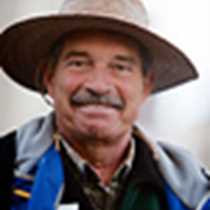Petersburg and Thomas Bay, Southeast Alaska
Fog shrouded the world around us, first in thick curls, then completely enclosing us so as to use the foghorn. We proceeded slowly towards Petersburg in the morning, an interesting and quaint fishing town founded by Norwegians a century ago. There we docked and had a series of morning activities, including hiking in a bog across Wrangell Narrows on Kupreanof Island. This bog or muskeg is formed by water becoming stagnant and eventually acid, causing the typical forest vegetation to disappear, and another type of plants, better adapted to these difficult conditions to take advantage of the abundant sunshine and water there. Among these plants are a series of trees such as the mountain hemlock, lodgepole pine, common juniper, western redcedar and Alaska yellow cedar. Usually they grow contorted or very small, often unrecognizable to us. Among the smaller plants are the Labrador tea, bog laurel, bog and dwarf blueberries, bog cranberry, as well as buckbean and deer cabbage. Back near town, thousands of different gulls were always to be seen in the channel.
Right across Frederick Sound on the mainland, Thomas Bay offered us a dense forest walk with a visit to a grandiose waterfall, which salmon find impossible to swim up. Our path led us to a higher vantage point of the raging glacier-melt waters, forced through a narrow gorge. It continued on up through a humid, dark forest, where the understory is literally covered with mosses of many species, as well as ferns and water-loving plants, including the smelly but useful skunk cabbage. Here we looked for one of the six species of newts (salamanders) to be found in Alaska, among the dripping wet vegetation and mossy rocks, but to no avail.
Fog shrouded the world around us, first in thick curls, then completely enclosing us so as to use the foghorn. We proceeded slowly towards Petersburg in the morning, an interesting and quaint fishing town founded by Norwegians a century ago. There we docked and had a series of morning activities, including hiking in a bog across Wrangell Narrows on Kupreanof Island. This bog or muskeg is formed by water becoming stagnant and eventually acid, causing the typical forest vegetation to disappear, and another type of plants, better adapted to these difficult conditions to take advantage of the abundant sunshine and water there. Among these plants are a series of trees such as the mountain hemlock, lodgepole pine, common juniper, western redcedar and Alaska yellow cedar. Usually they grow contorted or very small, often unrecognizable to us. Among the smaller plants are the Labrador tea, bog laurel, bog and dwarf blueberries, bog cranberry, as well as buckbean and deer cabbage. Back near town, thousands of different gulls were always to be seen in the channel.
Right across Frederick Sound on the mainland, Thomas Bay offered us a dense forest walk with a visit to a grandiose waterfall, which salmon find impossible to swim up. Our path led us to a higher vantage point of the raging glacier-melt waters, forced through a narrow gorge. It continued on up through a humid, dark forest, where the understory is literally covered with mosses of many species, as well as ferns and water-loving plants, including the smelly but useful skunk cabbage. Here we looked for one of the six species of newts (salamanders) to be found in Alaska, among the dripping wet vegetation and mossy rocks, but to no avail.




